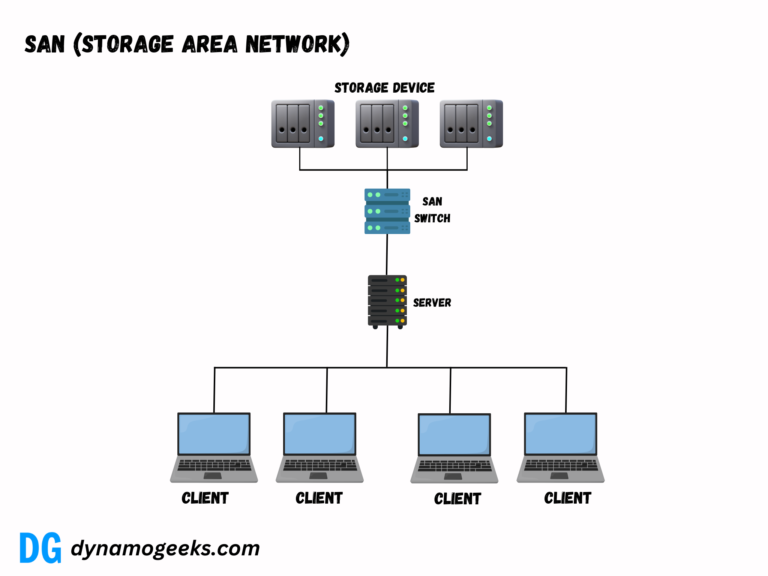Introduction to Load Balancers
In the digital world, the stability and efficiency of websites and applications are paramount. Imagine a scenario where thousands, if not millions, of users are trying to access a service simultaneously. Without an efficient system in place, services could easily become overwhelmed, leading to slow response times or even total outages. This is where load balancer comes into play, ensuring that traffic is distributed evenly across servers, thus maintaining the quality of service irrespective of the load.
What is a Load Balancer?
A load balancer is a network device or software application designed to distribute incoming network traffic across multiple servers. This distribution helps to ensure that no single server becomes overwhelmed with requests, which can degrade performance or lead to outages. Essentially, load balancers act as the traffic police of server networks, directing clients to the best server based on various criteria to optimize resource use and maximize speed.
Key Functions of Load Balancers:
- Distribution of Client Requests: It ensures that no single server bears too much demand. By spreading the requests evenly, load balancers help in maximizing speed and minimizing response time.
- Health Checks for Fault Tolerance: Regular checks on the health of servers ensure that all requests are routed to servers that are online and ready to respond.
- Flexibility and Scalability: Load balancers facilitate easy addition or subtraction of servers without disrupting overall service.

How Does a Load Balancer Work?
A load balancer is like a traffic cop for internet traffic. It helps to manage the flow of data between users and servers that host websites or applications. Here’s a simple, detailed explanation of how a load balancer works:
1. Directing Traffic
When multiple users try to access a website or service, a load balancer acts as a middleman. It receives requests from users and decides which server among several available servers should handle the request. This decision is based on which server is least busy or closest to the user, ensuring faster and more reliable access.
2. Improving Performance
By distributing the requests evenly among servers, a load balancer prevents any single server from becoming overloaded. This helps the website or application perform better because no single server struggles to handle too many users simultaneously.
3. Increasing Availability
Load balancers continuously check the health of servers to make sure they are up and running. If a server fails or is not responding, the load balancer will stop sending traffic to that server and reroute it to other servers that are still operational. This way, even if one server goes down, the website or service remains available without interruption.
Load Balancer Types
Load balancing can be implemented with various techniques each suited for different environments and purposes.
1. Hardware Load Balancers
Hardware load balancers are dedicated devices built specifically for load balancing with optimized hardware to handle high-traffic loads. They are typically more expensive but offer high performance and reliability. Hardware load balancers are used in environments where performance and throughput cannot be compromised, such as large enterprise settings or high-traffic e-commerce sites.
2. Software Load Balancers
Software load balancers are applications that run on general-purpose hardware rather than specialized devices. They can be more flexible and easier to integrate with cloud-based infrastructure. Software load balancers can be deployed on-premises or in a cloud environment, and they are often used in environments where rapid scalability is needed.
3. Application Load Balancer (ALB)
4. Network Load Balancer (NLB)
Network Load Balancers work at the transport layer (Layer 4) of the OSI model. They route traffic based on TCP or UDP protocols, including IP address and port number. NLBs are designed for high performance and low latency because they make fewer decisions compared to ALBs. They are best suited for load balancing TCP traffic where extreme performance and low latency are crucial, such as in real-time data streaming or gaming applications.
5. Global Server Load Balancer (GSLB)
Global Server Load Balancers are designed to manage traffic across multiple data centers or geographical locations. They distribute client requests based not just on server health and load balancing algorithms but also considering the geographic location of the client to reduce latency and improve performance. GSLBs are particularly useful for multinational applications, ensuring users are routed to the nearest or best-performing data center.
Types of Load Balancing Algorithms
Load balancing algorithms are crucial for distributing incoming network or application traffic across multiple servers efficiently. Each algorithm has its unique method of assigning traffic to servers, based on different criteria. Here are the most common types of load balancing algorithms:
1. Round Robin
This is one of the simplest load balancing algorithms. The Round Robin method distributes incoming requests sequentially and evenly across all servers in a pool. Once the list of servers is exhausted, it starts again at the first server. This method is effective for servers with similar specifications and when sessions do not need to be persistent.
2. Least Connections
The Least Connections algorithm directs traffic to the server with the fewest active connections. This approach is more dynamic than Round Robin because it considers the current load on each server. It’s particularly useful when different tasks consume different amounts of server resources, ensuring that no single server gets overwhelmed.
3. IP Hash
The IP Hash method uses the IP address of the client to determine which server receives the request. By calculating a hash of the IP address and dividing it by the total number of servers, this method consistently directs a user to the same server (ideal for session persistence). This consistency helps in maintaining user session information across multiple requests.
4. Weighted Round Robin
5. Weighted Least Connections
Similar to the Weighted Round Robin, the Weighted Least Connections algorithm also assigns a weight to each server. However, it routes traffic not just based on the sequential order, but focusing on the number of connections and the server’s capacity. Servers with higher weight (and presumably higher capacity) will handle more connections than those with less.
6. Random
The Random algorithm selects a server at random for each incoming request. This method is straightforward but does not guarantee even distribution of load or session persistence. It’s generally not preferred for production environments but can be useful in scenarios with a large number of similar, stateless servers.
7. Resource Based
This advanced algorithm directs traffic based on the actual current load or capacity of the servers. It takes into account the CPU load, memory usage, or network bandwidth, which helps in making more intelligent routing decisions to servers that are most capable of handling additional work.
8. Geographic
Geographic load balancing distributes requests based on the geographical location of the client, aiming to connect users to the server nearest to them. This reduces latency, improves load times, and can also comply with data residency requirements.
Each of these algorithms has its strengths and is suited to different kinds of network environments and server capabilities. Choosing the right load balancing method depends on the specific needs of the application, such as session persistence, server capacity, and the importance of equal load distribution.
Load Balancers in Different Environments
1. Data Centers
Hardware load balancers distribute network traffic among servers to prevent overload and ensure reliability in traditional data centers.
2. Cloud Environments
Cloud-based load balancers offer scalability and flexibility, automatically adjusting to application demands within cloud services like Google Cloud, AWS and Azure.
3. Hybrid Environments
Load balancers in hybrid environments manage traffic between on-premises and cloud infrastructure, optimizing performance and compliance.
4. Multi-Cloud Environments
In multi-cloud setups, load balancers distribute traffic across various cloud platforms, enhancing resource use and resilience.
5. Edge Computing
Edge load balancers reduce latency by managing traffic close to users, improving speed and efficiency in data delivery.
Best Practices in Load Balancing
Load balancing is crucial for managing traffic across network servers efficiently, but it comes with its set of challenges. Here’s an overview of common issues faced in load balancing and the solutions to address them:
1. Server Health Monitoring
Challenge: Ensuring that traffic is only directed to healthy servers is crucial. If a load balancer continues to route requests to a failed server, it results in application downtime and poor user experience.
Solution: Implement health checks that periodically verify the status of servers. These checks can range from simple pings to complex URL fetches or custom scripts that validate server responses. The load balancer should automatically reroute traffic away from any server that fails these health checks.
2. Traffic Spikes
Challenge: Handling sudden increases in traffic can overwhelm servers if not managed properly, potentially leading to server crashes and service outages.
Solution: Use auto-scaling in conjunction with load balancing. Auto-scaling adjusts the number of active servers based on current traffic loads, ensuring that the load is always appropriately distributed across sufficient resources.
3. Session Persistence
4. Configuration Complexity
Challenge: Configuring a load balancer, especially in complex environments with multiple servers, services, and policies, can be prone to errors.
Solution: Automation and centralized management tools can help simplify the configuration and management of load balancers. Using templates and predefined policies can also reduce the likelihood of errors.
5. SSL/TLS Overhead
Challenge: SSL/TLS decryption and encryption are resource-intensive processes that can impose a significant burden on servers, especially under high traffic conditions.
Solution: Offload SSL/TLS processing to the load balancer, freeing up server resources. Many modern load balancers support SSL offloading, where they handle the encryption and decryption of traffic, thus reducing the load on backend servers.
6. Scalability
Challenge: As organizations grow, their infrastructure must scale efficiently. Traditional load-balancing solutions may not scale seamlessly with increasing traffic and more complex network architecture.
Solution: Employ cloud-native load-balancing solutions that provide inherent scalability and flexibility. These solutions can automatically adjust to changing load conditions without manual intervention.
7. Geographic Distribution
Challenge: Managing traffic across geographically dispersed data centers can introduce latency and complicate load balancing.
Solution: Use a Global Server Load Balancer (GSLB) that routes users to the nearest or best-performing data center based on geographic rules. This approach helps minimize latency and improve the user experience for a global audience.
8. Security
Challenge: Load balancers can be a target for cyber-attacks, as they are a critical piece of infrastructure handling all incoming web traffic.
Solution: Implement robust security measures including firewalls, intrusion detection systems, and regular security audits. Ensure that load balancers are updated with the latest security patches and are configured to handle DDoS attacks and other threats effectively.
Conclusion
Load balancers are an essential component of any networked environment expecting high volumes of traffic. By understanding and implementing an effective load balancing solution, businesses can ensure maximum efficiency, minimal response times, and improved user satisfaction.
This in-depth look not only covers the basics but also expands into the strategic and technical nuances of load balancing. By embracing these concepts, organizations can bolster their network resilience and readiness, ensuring they remain robust in the face of varying internet traffic conditions.





Wow!, Simple Explanation